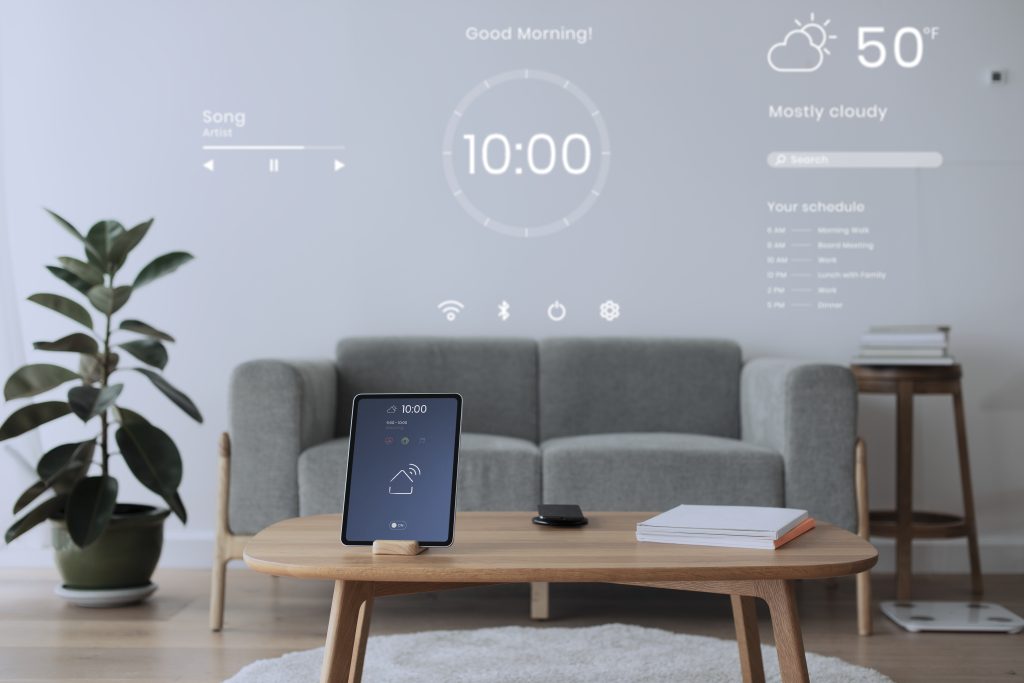As households search for ways to lower utility bills and reduce environmental impact, smart home technology is becoming a powerful ally. Energy efficiency is no longer just about upgrading to LED bulbs or adding insulation. Today, smart systems are making it easier to manage consumption in real time, offering solutions that are both cost-effective and sustainable. Smart Home Innovations That Save Energy are now a central topic in discussions about the future of modern living, blending technology with everyday practicality.

Why Energy-Saving Smart Homes Matter
Energy use in homes continues to account for a significant portion of global emissions. Heating, cooling, and electricity consumption remain primary drivers of both energy bills and carbon footprints. While solar panels and efficient appliances help, the rise of smart technology represents a step further—giving homeowners direct control over usage patterns. By combining automation with data insights, these tools transform energy management from a passive activity into an active, optimized process.
The importance of these innovations lies in their ability to deliver convenience alongside sustainability. Instead of asking families to sacrifice comfort, they offer personalized control that fits seamlessly into daily routines. This dual benefit is fueling a rapid shift in adoption across urban and suburban households alike.
Smart Thermostats: The First Line of Efficiency
One of the most impactful smart home devices is the smart thermostat. These systems learn a household’s schedule, adjusting heating and cooling automatically to avoid wasted energy. For example, a thermostat can reduce heating when residents are at work and increase it shortly before they return home. Many models also track usage data, providing insights into consumption patterns that homeowners can act on.
Smart thermostats represent the entry point for many households exploring Smart Home Innovations That Save Energy. They not only cut costs but also create a more comfortable living environment by balancing temperature intelligently. With wider adoption, these devices could significantly reduce residential energy demand over the next decade.
Intelligent Lighting Systems
Another popular category is smart lighting. Traditional bulbs waste power when left on unnecessarily, but smart lighting systems provide precise control. Homeowners can use timers, motion sensors, or even smartphone apps to manage lights from anywhere. Some systems connect to voice assistants, making adjustments as simple as issuing a command.
Beyond convenience, smart lighting also incorporates adaptive features like daylight sensors. These automatically dim or switch off lights when natural light is sufficient, reducing unnecessary electricity use. As LED technology continues to evolve, combining it with smart controls further enhances its efficiency.
Energy-Monitoring Plugs and Appliances
Smart plugs and appliances take energy tracking a step further by providing granular insights. These tools allow households to identify which devices consume the most energy, often revealing surprising inefficiencies. For example, an older refrigerator or standby electronics may be responsible for a disproportionate share of monthly bills.
With this data, homeowners can make informed decisions—whether that means upgrading an appliance or simply managing when it runs. For instance, running a dishwasher or washing machine during off-peak hours can reduce strain on the grid and save on costs where utility providers offer time-based pricing.
Solar Integration and Smart Grids
A growing trend in Smart Home Innovations That Save Energy is the integration of renewable energy systems with smart management. Solar panels paired with intelligent inverters and battery storage enable households to maximize clean energy use. Smart systems can prioritize using solar energy during the day, store excess in batteries, and only draw from the grid when necessary.
This setup reduces reliance on fossil fuels while also providing resilience during power outages. Coupled with grid-interactive features, these systems can even feed energy back to the grid, creating a two-way relationship that benefits both homeowners and communities.
Water Heating and Smart HVAC
Heating water is another major energy expense in most homes. Smart water heaters now allow users to schedule heating cycles, ensuring hot water is available when needed without wasting energy when it isn’t. Some models also integrate with solar systems, aligning heating schedules with peak solar generation.
Similarly, advanced HVAC systems now use sensors to monitor air quality and occupancy, adjusting performance accordingly. These systems avoid unnecessary heating or cooling in empty rooms, focusing resources where they’re actually needed. Over time, the efficiency gains add up significantly.
The Role of Artificial Intelligence
Artificial intelligence (AI) is increasingly central to smart energy management. Unlike basic timers or pre-set schedules, AI-powered systems learn from user behavior and environmental conditions. They can predict when energy demand will spike and adapt automatically. For instance, AI can lower blinds during hot afternoons to reduce cooling loads or preheat a home in the most efficient window before occupants arrive.
This level of adaptability makes AI one of the most promising aspects of Smart Home Innovations That Save Energy. By continuously optimizing usage, it helps homeowners achieve savings without constant oversight.
Barriers to Adoption
Despite the benefits, challenges remain. Upfront costs for devices and installation can deter some households, particularly in regions with lower energy prices. Compatibility between different smart systems can also create complexity. Additionally, privacy concerns around data collection remain a point of discussion, as energy monitoring involves sensitive household patterns.
However, as prices drop and interoperability standards improve, adoption is expected to rise steadily. Early adopters are already demonstrating measurable savings, creating a strong case for broader uptake.
Future Outlook
Looking ahead, the next wave of Smart Home Innovations That Save Energy will likely focus on integration and automation. As more devices connect seamlessly, homeowners will gain unified control of lighting, heating, appliances, and renewable energy sources. AI will continue to enhance these systems, making them proactive rather than reactive.
The broader impact could be substantial. If widely adopted, these innovations have the potential to reduce household energy use by a significant margin, lowering emissions and easing demand on national grids. For individuals, the outcome will be homes that are not only more efficient but also more comfortable and resilient.
Conclusion
Smart home technology is reshaping how households approach energy efficiency. From thermostats and lighting to renewable integration and AI-driven automation, the landscape is evolving rapidly. The appeal lies in the balance of convenience, cost savings, and sustainability—a rare combination that resonates with both tech enthusiasts and everyday homeowners.
Smart Home Innovations That Save Energy are more than just a trend. They represent a necessary shift toward smarter living, where technology supports both personal comfort and global sustainability. As adoption grows, these systems will play a pivotal role in shaping homes of the future.
References
- Smart Home Tech for a Greener Future: https://smartnesttech.com
- The complete smart thermostat guide: Finding your perfect match, https://simplycodes.com
- How Home Automation Is Revolutionizing Energy Efficiency for Homeowners, https://www.bhg.com









